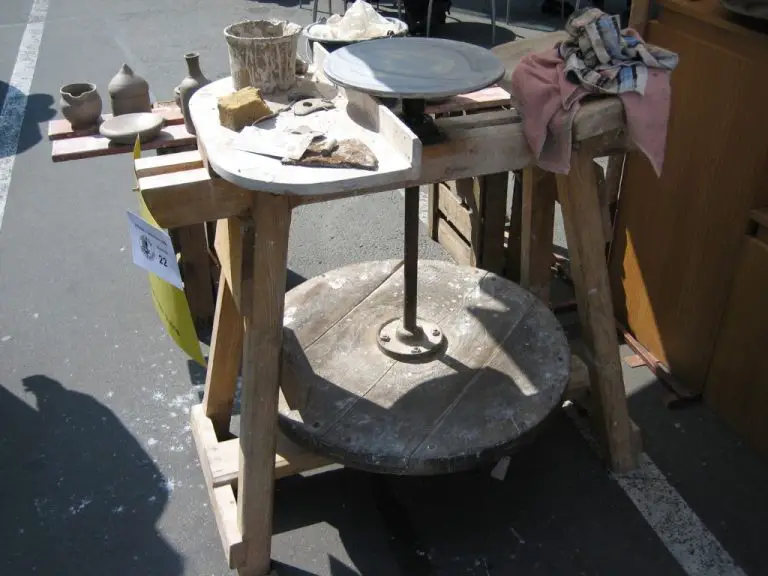Are Swivel Chairs Still In Style?
Swivel chairs have been a staple in offices and homes for over 200 years, providing comfort, style, and efficiency to generations of furniture users. But some may wonder, are these spinning seats still stylish and relevant in today’s world of minimalism and open floor plans? Or are swivel chairs going the way of paisley prints and wood paneling?
In this article, we’ll spin through the history of swivel chairs, explore the ergonomic and design benefits that keep them popular, and examine why these chairs continue to swivel into the future. We’ll also provide tips for choosing the right swivel chair to keep your seating style on point.
So buckle that seatbelt and get ready to take a spin through everything you need to know about the staying power of swivel chairs!
Origins
The invention of the swivel chair is credited to Thomas Jefferson around the year 1776 when he was writing the Declaration of Independence. As reported by Chairish, Jefferson wanted more flexibility while working at his desk, so he created a chair with a revolving base that allowed him to turn from his desk to his bookshelf easily. This primitive swivel chair paved the way for future variations and improvements on the revolving office chair.
The original purpose of Jefferson’s swivel chair prototype was convenience and flexibility. By allowing the seat to rotate, he could access objects around his workspace without needing to constantly get up and down. This innovation demonstrates Jefferson’s knack for functional design and his drive to improve efficiency even in simple furniture. While Jefferson is credited with the original swivel chair, subsequent engineers and designers built upon his concept over the next centuries to optimize comfort and ergonomics.
Rise in Popularity
Swivel chairs first became popular in the 1950s as accent chairs in living rooms, bedrooms, and other rooms in homes. They provided a touch of mid-century modern style while allowing ease of movement. According to Revolve Furnishings, swivel chairs really took off in the 1980s with the rise of ergonomic office chairs. As more people worked desk jobs, the ability to swivel and tilt became highly desirable for computer use. Swivel chairs allowed flexibility and movement while working long hours. Today, swivel chairs remain a staple in many office environments.
Swivel chairs have also grown in popularity for home use. Their relaxed vibe makes them a favorite for dens, living rooms, bedrooms, and reading nooks. The swivel function lets people spin around to face different directions without having to move the chair. This makes swivel chairs convenient and playful for conversation areas. As work-from-home has increased, swivel chairs have surged for home office use as well. Their ergonomic benefits and nostalgic mid-century style continue to drive demand.
Ergonomic Benefits
One of the standout advantages of swivel chairs is their ergonomic design and adjustability features. The ability to swivel and rotate in the chair allows users to easily reach different areas of their workspace without straining (Source). This dynamic sitting promotes movement while reducing static postures that can lead to discomfort.
Additionally, most quality swivel chairs have adjustable features like seat height, armrests, lumbar support, tilt tension, etc. Being able to customize the chair’s specifications to one’s body and preferences enables proper alignment and support. Having an adjustable seat height, in particular, assists users in finding an optimal position relative to their workstation that minimizes strain on the neck, shoulders, and back (Source).
With their movement and adjustability, swivel chairs provide key ergonomic benefits that can improve comfort and reduce health risks from prolonged sitting.
Aesthetic Styles
Swivel chairs come in a wide variety of aesthetic styles to match different decor tastes. Two of the most popular materials for swivel chair upholstery are leather and mesh.
Leather swivel chairs have a luxurious, upscale look and feel. They come in colors like black, brown, and tan. Leather is durable and ages well over time. However, leather can be hot in the summer and cold in the winter. Leather swivel chairs are generally more expensive than mesh chairs.
Mesh swivel chairs often feature breathable mesh material on the back and seat. This makes them a comfortable choice for long sitting sessions. Mesh chairs come in various colors like black, gray, blue, and red. Mesh material is lower maintenance than leather. However, mesh chairs have a more casual, contemporary vibe compared to leather.
Beyond upholstery, other aesthetic factors like armrests, base style, and color affect the look of a swivel chair. Chairs with sleek curved armrests create a modern profile. In contrast, high-backed leather executive chairs have a traditional style. Chrome bases add a sleek touch, while black or wooden bases are more subtle. With many combinations possible, there are swivel chairs to suit any aesthetic.
Reference: Swivel Chairs For Living Room – Faharas NET. (2022, December 13). Retrieved from https://faharas.net/swivel-chairs-for-living-room/
Cost Considerations
The cost of a swivel chair can vary widely depending on the brand, materials used, and features included. On the lower end, basic swivel desk chairs made of standard materials like fabric, plastic, and metal can retail for $50-150. Mid-range models from reputable furniture brands generally cost $150-300. Higher-end ergonomic swivel chairs from companies like Herman Miller and Steelcase with more adjustments and premium materials can run $300-1,000+.
When deciding on budget, consider how often the chair will be used and by whom. For example, an executive chair or task chair that will be sat in 40+ hours per week warrants more investment than a guest chair that’s used infrequently. Prioritize ergonomic adjustments and quality materials that will provide support and durability. Though initial costs may be higher, a well-made chair should last 5-10 years with proper care.
While more expensive swivel chairs generally provide better comfort, lower cost options can also be suitable, especially for lighter or occasional use. Focus on finding a chair with necessary adjustments and materials to provide adequate back support based on your budget. With some brands, it’s also possible to customize features to get a higher-end chair at lower cost. Take time to test chairs in person when possible to evaluate comfort and quality before purchasing.
Environmental Impact
The manufacturing of swivel chairs can have a significant environmental impact due to the materials and processes used. However, many manufacturers are now focused on sustainability and using eco-friendly materials and production methods to reduce the carbon footprint.
For example, the Dauphin Indeed chair uses lightweight materials and reduced packaging to lower emissions during production and shipping (https://www.dauphin.dk/dauphin/dk/daenisch/kontorstole/indeed). The seat back is made of recycled plastic and the chair contains over 50% recycled materials overall.
Other eco-friendly options include chairs made with organic and recycled materials like recycled steel and natural latex foam. The Mirra 2 chair by Herman Miller contains 42% recycled content and is 96% recyclable at the end of its lifetime (https://8billiontrees.com/eco-friendly-natural-products/eco-friendly-furniture/).
By choosing chairs made sustainably with recycled and organic materials, the manufacturing carbon footprint can be significantly reduced compared to traditional production methods.
Future Outlook
The future looks bright for swivel chairs. With advancements in technology and design, swivel chairs are becoming more ergonomic, customizable, and environmentally sustainable.
Experts predict swivel chairs will incorporate more smart technology features in the coming years. Chairs may adjust automatically to provide optimized lumbar support and promote healthy posture. Some models may even track data like sitting time and calories burned (https://vocal.media/lifehack/what-does-a-swivel-chair-work-tasks-involve). Integrated sensors and AI could enable chairs to tailor their adjustments to an individual’s needs and preferences.
In terms of design, customization will likely increase. Already companies allow customers to select from various upholstery colors and materials when ordering. This personalization may expand to enable choosing different armrests, seat shapes, lumbar supports, and other ergonomic features. Sustainably sourced and recycled materials will also grow in popularity.
While the core swiveling function will remain, swivel chairs are poised to become more high-tech, customizable, and eco-friendly. The result will be ever more comfortable and personalized sitting experiences.
Alternatives
Here are some possible alternatives to traditional swivel chairs:
Standing desks have become increasingly popular in recent years as a healthier alternative to sitting for extended periods. Standing desks allow you to alternate between sitting and standing throughout the day, reducing back pain and other issues associated with prolonged sitting. Many standing desks come with stools or chairs that can swivel and slide under the desk when standing. For example, the Vari Electric Standing Desk offers an optional stool for periodic sitting.
Exercise balls can also replace traditional office chairs while engaging your core muscles and improving posture. Exercise ball chairs like the Gaiam Balance Ball Chair feature a yoga ball mounted on a wheeled base that allows for adjusting the height while swiveling and rolling. These require more effort to remain balanced while seated but offer dynamic movement.
Conclusion
Swivel chairs have had a long and storied history in office design. Since their introduction in the late 19th century, swivel chairs have become a staple in workspaces thanks to their versatility, comfort, and aesthetic appeal. While trends come and go, swivel chairs remain popular due to their functionality and flexibility in adjusting to the needs of the worker. From the vintage mid-century designs to the ergonomic task chairs of today, swivel chairs continue to spin and roll their way into modern offices and home workspaces.
In conclusion, swivel chairs remain a timeless and functional seating option that balances style, comfort, and practicality. Though tastes may change, the core benefits of being able to fluidly move and adjust in a chair persist. Swivel chairs are here to stay as both a nostalgic callback to the past and an essential component of any productive contemporary work environment.




